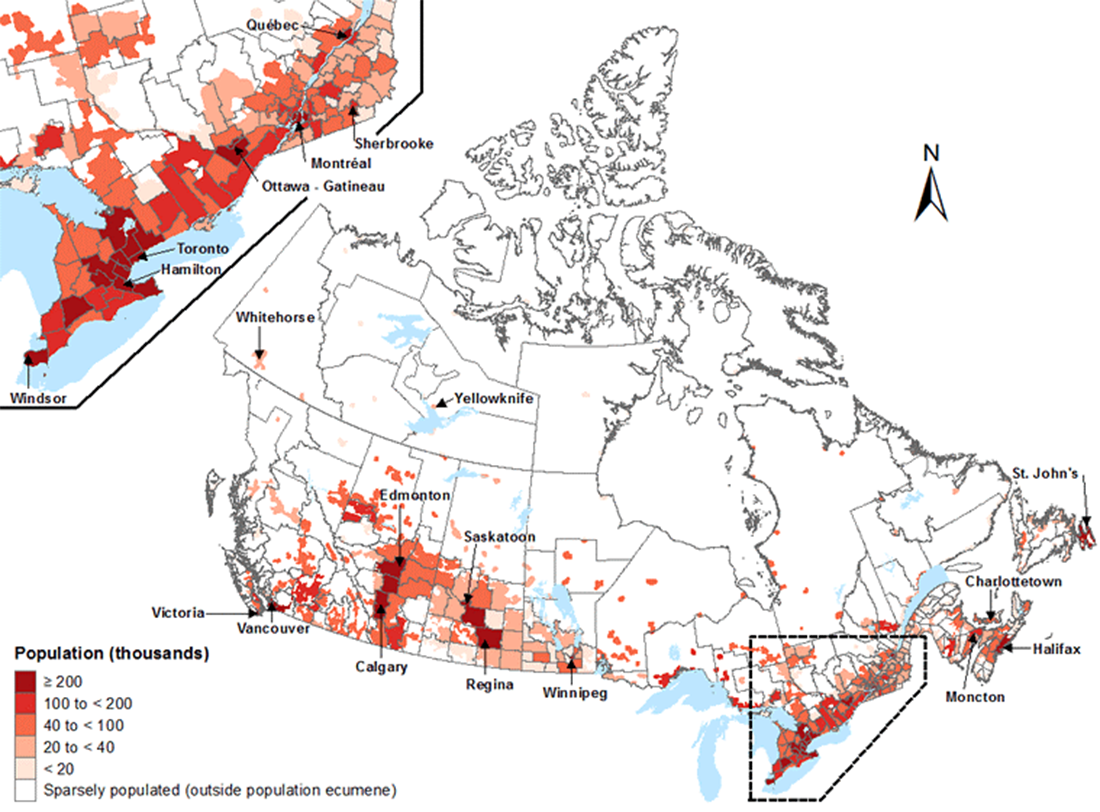Every now and then, somebody on the Internet will look at population statistics and ask, “Why is Canada so sparsely populated?” or even more specifically, “Why is the top of Canada so empty of people?”
The rest of this article is behind a paywall. Please sign in or subscribe to access the full content.
Despite boasting 9.985 million square kilometers (3.8 million square miles) in area, the country has a projected population of just over 40,200,000 people. That’s peanuts compared to the USA’s 340 million, and makes the UK’s population of 69 million people look positively crammed in.
Looking at where people live in Canada, though, reveals that the population isn’t exactly spread evenly. People are mainly concentrated towards the south of the country, in cities such as Toronto, Montreal, Calgary, and Ottowa.

Canada population map showing people mainly live in the South.
So why is it that such a large country has most of its population concentrated towards the south? Part of the answer is the “Canadian shield”, a vast area of exposed Precambrian igneous and metamorphic rocks making up around 50 percent of Canada’s landmass.
“The Canadian Shield refers to the exposed portion of the continental crust underlying the majority of North America,” the Canadian Encyclopedia explains, adding that the crust extends from Mexico to Greenland.
“With the exception of the Canadian Shield, the rocks of the North American Craton are buried deep within the continent and covered by soil and other material.”
The shield is made up of four smaller provinces – the Kazan, Davis, James, and Laurentian Regions – and is thought to have formed over 3 billion years ago. It was once home to mountains, possibly the largest on Earth, but they have long since eroded away.
While an interesting geological area, with exposed rock at the surface which is over 542 million years old, it is a difficult area to settle in.
The area is home to thin soils and hard exposed bedrock, as well as many rivers and lakes, making it difficult to farm and lay down infrastructure. As well as this, in the north there is the extreme cold to deal with, with temperatures regularly dropping below -40°C (-40°F, pleasingly) and all the associated problems that snow and ice bring.
Even if you were able to establish a city in the north of the country, you would need to think about the maintenance of roads and shipping of goods, with no widescale agriculture of your own to rely on.
Source Link: Why Is The Top Of Canada So Sparsely Populated? Meet The "Canadian Shield"